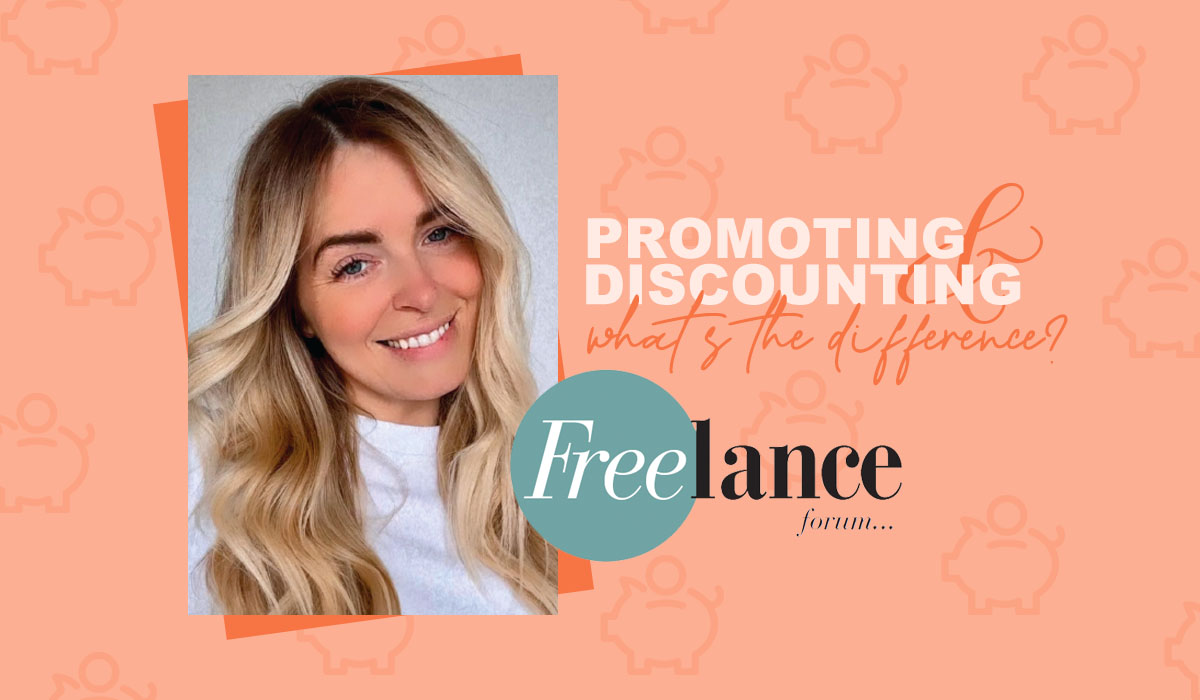RUTH LUNDSTROM, CEO & Founder of The Freelance Suite app, explains the difference between building your business and killing your reputation…
“Reactive discounting fixes the short-term problems of cashflow and client attention, but it leaves us with bigger, longer-term issues like devaluation, profit losses, client disloyalty and pricing wars!”
As hairdressers, we have been primed to believe that success is an over-filled diary. When we first make the step from the cosy comfort of an employed wage to the new unpredictability of freelancing, we often have tunnel vision of simply getting booked up.
Or, we may be a seasoned freelancer, but the minute we sniff a quiet week or down period, we revert to a familiar panic tactic – the reactive discount!
Inherently, we all know that low prices or a decent bargain will draw in a lot of people, allowing us to get booked and busy. However, it’s easy to become so focused on being booked and busy that we don’t stop to think what it could be costing us in the long run.
Reactive discounting fixes the short-term problems of cashflow and client attention, but it leaves us with bigger, longer-term issues like devaluation, profit losses, client disloyalty and pricing wars!
The biggest problem with reactive discounting is that it has zero strategy. It can put us into a never-ending cycle whereby we put out a sudden discount whenever we seem quiet, which can slowly condition clients to believe it’s actually better if they don’t book ahead at all because… there will be a crazy discount soon!
Putting out random discounts like this is also seen by our loyal clients; they may begin to wonder why they’re always paying full price, when others are not. This can make us seem disloyal and ungrateful to these valued clients, ultimately hurting our business and our brand.
This is why I’m a big advocate for promotions over discounting – and yes, there is a difference!
Promotions have a strategy built into them; they are planned and they help grow your business without making current clients feel devalued.
Here’s an example of a promotion to attract new clients:
- The Goal: To gain new clients.
- The Offer: A reduced-rate service with every colour.
- The Strategy: 80% of promotional clients to rebook before checkout.
This promotion would run for a limited time, ideally between 8-12 weeks. Run it successfully (with 80% of clients rebooking) and you’ll find yourself booked up with full-paying clients in no time. Remember, rebooking is crucial to converting clients from promotional prices to long-term, full-price status.
It’s also important to understand that whilst you may be making little-to-no profit during the promotion, the successful conversion of these clients is what will generate that high return on investment.
Plus, filling up your schedule with promotional clients is better than not making any money at all!
Also, consider offering ‘New Client’ promotions by asking current clients to tell their friends or co-workers about you – you’ll be pleasantly surprised how much they are happy to help.
It’s natural to shed and gain clients throughout the year, so running semi-frequent promotions will help to keep your diary full and create a surplus of clients on hand to take any availability that arises. This leaves you in a great position when it comes to increasing your prices and making sure that the supply and demand machine is well oiled.
Promotions don’t always have to be about gaining new clients, however, they could be about increasing your client’s average spend or introducing a new treatment to your service menu.
Whatever it is you want to promote, ask yourself these three things:
- What is the goal?
- What is the offer?
- How will we maximise on this offer?
Through running promotions and planning ahead, you will never have to resort to reactive discounting ever again…





